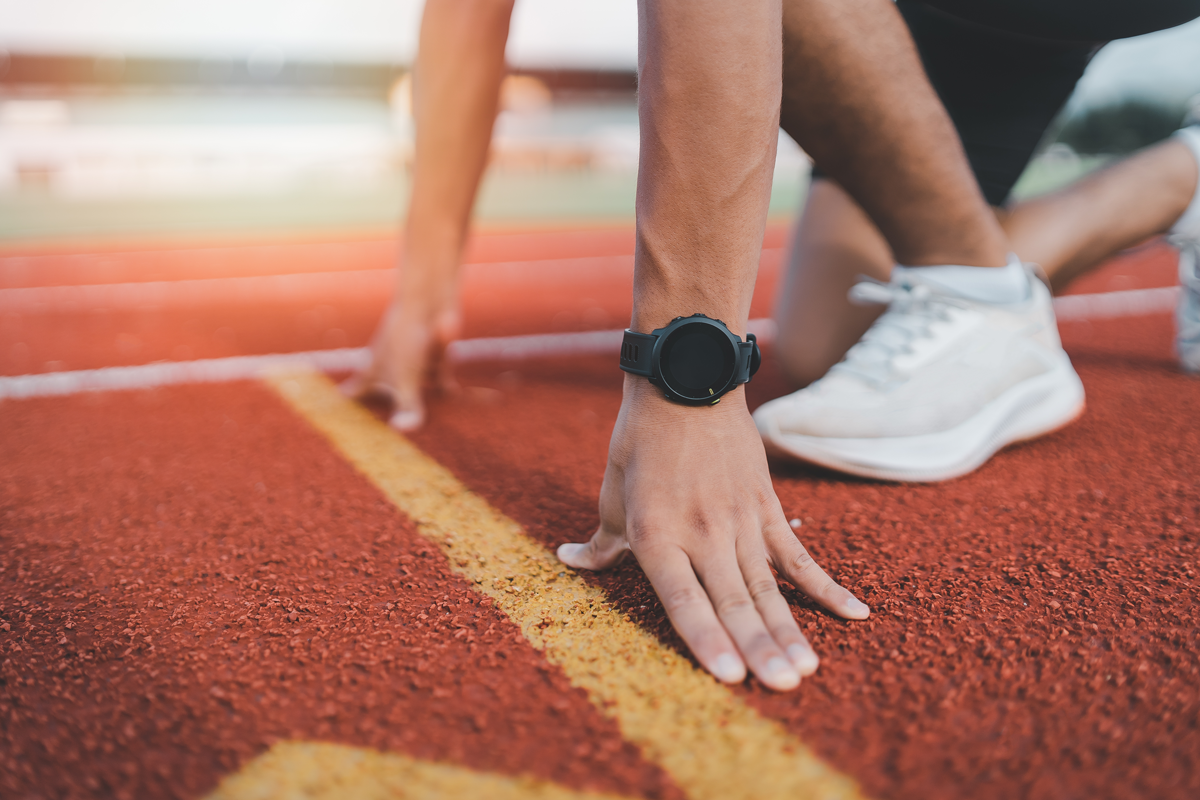
You just ran 21 kilometers in preparation for a marathon, ending your run on your sports watch, which then advises: “Recovery: 52 hours.”
A sports watch can track how many barbell squats you finish in a particular set, how many strides you take per minute during a run, and how many hours you should refrain from intense workouts after strenuous activity. These wearables usually come with an app highlighting performance stats, such as the maximum rate of oxygen you consume, which usually requires complex lab equipment to measure. Most high-end sports watches also have pulse oximeters that estimate the level of oxygen in your blood, even in your sleep.
Given the impressive amount of information a sports watch can provide, should you purchase one to level up your workouts?
Features for fitness
While sports wearables do measure fitness parameters, they also have other features that make physical activity more fun and convenient.
Monitor health statistics. Most people who purchase a sports watch consider this as one of its most useful features. An endurance athlete who wants to do heart rate training, for instance, might want real-time data showing it during a run.
Aside from heart rate, other health stats can be monitored by a sports watch. These include breathing, sleep hours, weight, calorie intake and expenditure, stress levels, hydration, and even the female menstrual cycle.
Trackers use different algorithms to come up with values derived indirectly. For instance, while breathing cannot be directly monitored by a sports watch, it can provide an estimate with a decent level of accuracy using an algorithm that looks at heart rate variability.
Some wearables collate these statistics and summarize them weekly, monthly, and yearly. By providing averages, measurement errors – such as extremely high and low readings – are relatively cancelled out.
Plan training programs. Sports watches usually work hand in hand with an app that’s downloaded and installed on a mobile phone. With an internet connection, some apps allow users to access a database of workouts. Others even have customizable training plans – complete with pre-recorded coaching videos from a trainer the user picks – that allow runners to reach a goal, may it be speeding up or merely reaching the finish line.
Track GPS. Some wearables can estimate the distance a runner covers on a treadmill based on their stride length and cadence. During outdoor runs, however, the GPS tracker kicks in, providing a more accurate measurement of how much distance is covered.
The route is usually documented as well, showing on a map where a user went for a run.
Play music. Many sports watches have enough memory to store songs from Spotify and other music providers. A runner with a Bluetooth headset can then listen to music stored on their sports watch.
Document activities. Whether it’s running, cycling, strength training, or yoga, an activity can be tracked by a sports watch to provide relevant data. For instance, a powerlifter doing deadlifts can track how long each set takes, how many reps there are per set, and even how much time is spent during rest intervals.
Aside from documenting individual activities, it can also summarize these. This allows runners, for instance, to track how many kilometers they cover each week.
Analyze performance statistics. Using health statistics, the sports watch can provide information on a user’s training status, maximum oxygen consumption rate during incremental exercise, training load, and the effect of training on their aerobic and anaerobic performance.
With the user’s permission, their data on the amount of sleep, the number of steps, or the amount of activity can also be compared to that of others for insights. For instance, the app might say that a person has been covering more distance than 21% of other users.

Show social media notifications. Runners who want to stay connected on social media even during runs might want to keep their phone on them using their Bluetooth-enabled sports watch. That way, they can receive instant notifications when someone messages them on Facebook or calls them on their phone.
Send emergency alerts. Because many sports watches can now detect accidents and other incidents, they can also provide emergency assistance. Through an app, the user can input emergency contact numbers who are notified when the need arises.
Track gear lifespan. Running shoes must be replaced regularly to ensure both safety and form. Bikes need maintenance every so often, depending on the mileage. Some fitness trackers therefore allow their users to add shoes and bikes to a gear list, for them to monitor usage and make timely visits to the shoe store or the bike shop.
Connecting users. Friends and family who use wearables from the same brand can add each other on their apps and check out statistics they share publicly. Some brands also encourage users to add friends to their app circles using their own Facebook friends list.
If the price is right
The list above is just a summary of what a sports watch can do. Each one is different in terms of capabilities and limitations. With sports watches not only monitoring fitness parameters but also setting training programs, they have gone above and beyond expectations. The more features they have, the more expensive they likely are. It is now up to you to decide which type of wearable meets your needs without breaking the bank.
Originally published in HealthToday Issue 1 2021




